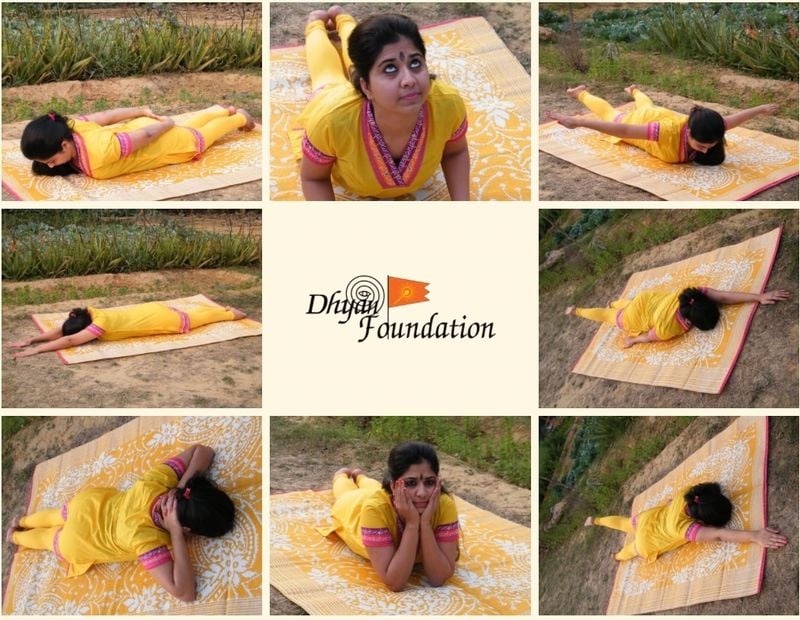Yoga, a precise science refined over millennia by Vedic seers, offers a profound journey of self-discovery. Transmitted through the traditional Guru-shishya parampara (teacher-student lineage), its principles remain timeless, transcending the ever-shifting landscape of modern lifestyles. Yoga’s true essence lies not in mere physical contortions or rapid breathing exercises, but in a deeper exploration of one’s inner being. The siddhis (powers) and transformative experiences associated with yoga are tangible realities for the dedicated practitioner (sadhak) who embarks on this path under the guidance of a genuine Guru, one who is detached from worldly desires (maya) and offers teachings without financial expectation. The true benefits of yoga unfold when practiced in its entirety, as a dedicated sadhana (spiritual practice), rather than a commercialized pursuit.
A central tenet of yoga, echoing the wisdom of the ancient rishis, emphasizes the importance of a straight spine for overall well-being. The rishis themselves embodied this principle, recognizing the connection between spinal health and vitality. Modern exercise regimes often prioritize aesthetics over structural integrity, neglecting the crucial role of the spine. Consequently, back pain and spinal issues, once considered afflictions of older age, are now increasingly prevalent among younger generations. Conditions like sciatica, once rare, have become commonplace, a testament to the disconnect from the balanced, nature-aligned principles central to yogic traditions. Sanatan Kriya, a comprehensive approach to Patanjali’s Ashtanga Yoga, offers a structured path to spinal health, emphasizing asanas that simultaneously strengthen both the muscular and skeletal systems, recognizing the interconnectedness of these structures in supporting the body’s upright posture.
The spine, often referred to as the “second brain,” plays a crucial role in bodily function, governing reflexes and connecting major organs. Modern lifestyles, characterized by prolonged sitting, poor posture, high stress, and often misguided fitness approaches, contribute significantly to spinal problems. Sanatan Kriya, with its emphasis on spinal health, provides a counterpoint to these detrimental influences. The following seven asanas, derived from Sanatan Kriya, offer a pathway to a strong, supple spine, benefiting both those seeking to address existing back issues and those aiming to prevent future problems. These practices are best undertaken under the expert guidance of a Guru to ensure correct execution and maximize their benefits.
The sequence of seven asanas begins with a preparatory position: lying flat on the stomach with legs straight, heels together, forehead and chin resting on the floor. Each subsequent asana is to be repeated seven times, with eyes closed and internal awareness maintained throughout. The asanas are: Sarpasana (Snake Pose), which involves interlocking fingers behind the back and raising the upper body while inhaling; Advasana (Reverse Corpse Pose), where arms and legs are stretched in opposite directions; Jyeshtika Asana, which involves interlocking fingers behind the neck and spreading the elbows to flatten the back; Makar Asana (Crocodile Pose), supporting the chin with the palms while resting on the elbows; Ardh Shalabh Asana (Half Locust Pose), raising one leg at a time while maintaining a prone position; Yaan Asana, lifting both arms and legs simultaneously; and Bhujang Asana (Cobra Pose), raising the upper body while supporting the torso with the hands.
Throughout these practices, the focus remains on synchronizing movement with breath. If discomfort or breathlessness arises, it is crucial to cease the practice. The guidance of a Guru is paramount for maximizing the benefits of these asanas. Properly executed, under expert guidance, these practices can open up energy channels (sushumna nadi), promoting the free flow of prana (life force). Youthfulness, radiance, and a strong spine are natural consequences of this enhanced energy flow.
The seven asanas outlined above form a comprehensive sequence for strengthening and increasing the flexibility of the spine. They address different areas of the back, working synergistically to improve posture, alleviate pain, and enhance overall well-being. Sarpasana and Bhujang Asana work on the upper back and shoulders, improving flexibility and strength. Advasana stretches the entire spine, promoting elongation and relieving tension. Jyeshtika Asana targets the upper back and shoulders, improving posture and reducing stiffness. Makar Asana provides a gentle stretch for the lower back and strengthens the abdominal muscles. Ardh Shalabh Asana strengthens the lower back and improves flexibility in the hips and hamstrings. Yaan Asana strengthens the entire back and improves core stability. When practiced regularly and correctly, these asanas can significantly enhance spinal health and contribute to overall well-being.
These practices, inherited from the ancient yogic traditions, offer a potent antidote to the detrimental effects of modern lifestyles on spinal health. They emphasize a holistic approach, integrating physical postures with breathwork and internal awareness. Under the guidance of a qualified Guru, these practices can unlock the transformative potential of yoga, leading to not only physical benefits but also to a deeper connection with one’s inner self. The emphasis on seeking guidance from a Guru underscores the importance of learning from a lineage holder who can provide personalized instruction and ensure the practices are performed safely and effectively. The Dhyan Ashram, under the guidance of Ashwini Guruji, is mentioned as a resource for those seeking to learn more about these practices.


